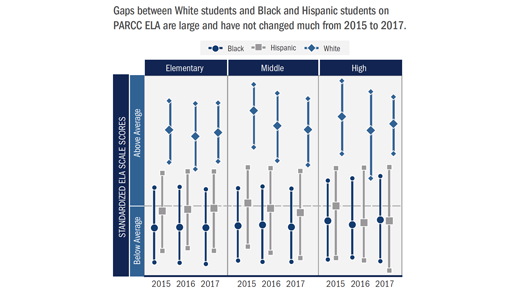Today, the American Institutes for Research released a new report, Looking Back to Move Forward: Progress and Opportunity in District of Columbia Public Schools[PDF], looking at the five years of progress at DC Public Schools, as well as areas to continue to work to close the achievement gap and ensure that every student at DC Public Schools receives a high-quality education.
The report finds that DC Public Schools is the fastest-improving urban school district in the country and has made significant gains on student achievement, graduation rates, Advanced Placement exams, student satisfaction, and attendance, but has large achievement gaps by race and socio-economic status.
Among the progress since School Year 2011-2012:
- DC Public Schools increased proficiency rates in English language arts and math for all student groups, including special education students, English Learners, and economically disadvantaged students;
- DC Public Schools and many historically low-performing schools saw improvements on PARCC, NAEP-TUDA, and other assessments;
- Graduation rates have increased substantially, including for all racial and ethnic groups; and
- Enrollment and student satisfaction have steadily increased.

“DC Public Schools has made tremendous progress for students across the city, and has changed the life trajectory of thousands of young people,” said Antwan Wilson, Chancellor of DC Public Schools. “But far too many students have not been set up for success, letting where they start determine their life outcomes. We must and will work to close the achievement gap, so that every student feels loved, challenged, and prepared for college and career.”
Stark gaps persist between students of color and their white counterparts in achievement rates, graduation rates, and post-secondary paths. According to the report:
- Achievement rates have improved for nearly all students at all school levels, yet gaps remain based on race and ethnicity: white students have surpassed the 70 percent proficiency target, yet proficiency rates for Black and Hispanic students are still well below 70 percent. Longstanding achievement gaps persist, and the gap widened in the 2017 PARCC assessment between students of color and white students.
- Graduation rates for white students have surpassed 75 percent, but graduation rates for Black and Hispanic students remain below 75 percent. In 2016, 93 percent of white students graduated within four years, while 67 percent of Black students and 67 percent of Hispanic students graduated within four years.
- Satisfaction rates among Black and Hispanic students have improved (at 81 percent and 89 percent, respectively), but have not yet reached the 90 percent goal set forth in the Capital Commitment. Some of the lowest-performing wards have shown the largest improvements in satisfaction rates over time.
- More than 48,000 students were enrolled in DCPS for School Year 2016−2017, an increase of more than 3,000 students from School Year 2011−2012.

On Friday, DC Public Schools will release a new five-year strategic plan to both capitalize on the progress laid out in the Capital Commitment and address the greatest areas of need for DC Public Schools.


